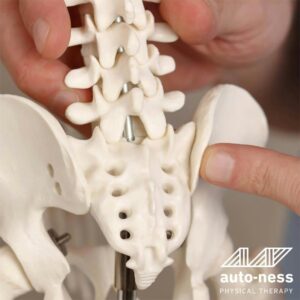Introduction
Every day, countless individuals across the globe are hampered by the persistent annoyance of lower back pain. While the sting of this discomfort might often go unnoticed by others, it can severely limit daily life. In this comprehensive guide, we’ll delve deeper into holistic and actionable solutions to help you combat and prevent lower back pain, paving the way for a brighter and more active future.
A Deeper Dive into Understanding Lower Back Pain
It’s essential to see lower back pain not just as an isolated physical condition but as an amalgamation of our lifestyle, genetic predispositions, and psychological state. Our daily habits, such as the amount of physical activity we partake in or the time we spend sedentary, play a significant role.
Factors such as prolonged desk jobs, genetic predispositions, age-related changes, and even the kind of diet we consume can escalate the frequency and intensity of back pain. Moreover, it’s noteworthy that mental health plays an intertwined role with chronic pain. Persistent feelings of stress, anxiety, or bouts of depression can make one more susceptible to prolonged bouts of back discomfort.
Extended Tips for Immediate Relief

Stay Active: It might sound counterintuitive, but light physical activities can often accelerate the healing process. Simple exercises like walking, swimming, or doing gentle yoga stretches can significantly aid in pain relief and muscle relaxation.
Heat and Cold Packs: A systematic approach of alternating between cold and heat packs can be incredibly beneficial. Ice packs, when applied shortly after a strain, help in reducing inflammation. Once the initial swelling has subsided, heat packs can be used to relax tense muscles and improve blood flow to the affected area.
Prioritize Good Posture: Our posture during various activities – be it sitting, standing, or even sleeping – can either alleviate or exacerbate back pain. Investing in ergonomically designed furniture, being mindful of standing with a straight spine, and using supportive pillows during sleep can make a world of difference.
Enhanced Holistic Therapeutic Approaches
Targeted Stretching: This isn’t about general stretching but stretches tailored for your specific pain regions. These stretches, when done correctly and consistently, can ease muscular tension, offering both immediate relief and long-term benefits.
Comprehensive Strength Training: While core strengthening is crucial, a full-body approach to strength training ensures overall muscular balance. This holistic approach provides the spine with better support and significantly reduces the chances of back-related injuries.
Manual Therapy: Apart from standard techniques like deep tissue massage or chiropractic adjustments, newer methods such as myofascial release can be immensely beneficial. These treatments help in restoring mobility and addressing specific pain triggers.
Advanced Postural Education: It’s not just about understanding good posture but also about comprehending body mechanics. A deeper knowledge of how different activities impact our spine and muscles can act as a preventive measure against pain.
The Comprehensive Role of a Holistic Lifestyle

To truly keep lower back pain at bay, it’s essential to adopt a lifestyle that looks beyond immediate relief. This involves a consistent focus on physical health, diet, mental well-being, and stress management. Daily practices like meditation, cardiovascular exercises, and adopting a nutrient-rich diet with emphasis on anti-inflammatory foods can significantly reduce the chances of recurrent back pain.
Conclusion
While lower back pain is undeniably widespread, it’s crucial to remember that it’s manageable and preventable. Through a combination of informed decisions, therapeutic interventions, and adopting a comprehensive holistic lifestyle, a pain-free life is achievable. The essence lies in staying proactive, being well-informed, and making health a priority.
Extended FAQ’s
Q: What role does diet play in managing lower back pain?
A: A balanced diet, rich in anti-inflammatory foods like berries, fatty fish, and green tea, can help reduce inflammation in the body. Reducing processed foods and sugars can also significantly aid in managing and preventing lower back pain.
Q: How can mental well-being exercises like meditation help?
A: Meditation and mindfulness practices help manage stress and anxiety. They teach the body to relax, reducing muscle tension and, in turn, alleviating back pain.
Q: Is it advisable to wear supportive gear like belts for back pain?
A: Supportive belts or braces can offer temporary relief and are particularly useful after injuries. However, relying on them long-term can weaken back muscles. It’s always best to consult a healthcare professional regarding their prolonged use.
References:
2. National Institute of Neurological Disorders and Stroke. (2020). Low Back Pain Fact Sheet. Link
3. Mayo Clinic Staff. (2019). Back pain. Mayo Clinic. Link
4. Harvard Health Publishing. (2019). The real-world benefits of strengthening your core. Harvard Health. Link
5. Cleveland Clinic. (2019). Chronic Back Pain and Stress. Link
6. WebMD. (2019). Natural Treatments for Lower Back Pain Relief. Link
7. Harvard Health Publishing. (2020). Stretching and strengthening are key to healing and preventing back pain. Harvard Health. Link


